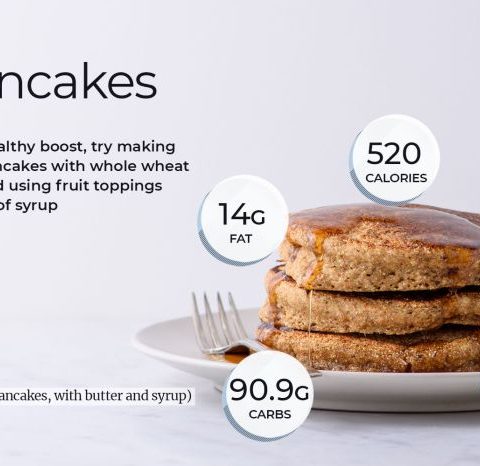Kaizen Pasta and Dietary Considerations

Kaizen pasta nutrition facts – Kaizen pasta, often marketed as a healthier alternative to traditional pasta, presents a unique set of dietary considerations depending on individual needs and preferences. Understanding its composition and potential allergens is crucial for making informed choices. This section will explore the suitability of Kaizen pasta for various diets and highlight potential dietary restrictions.
Kaizen Pasta and Vegan/Vegetarian Diets
Kaizen pasta, in its most basic form, is typically suitable for both vegan and vegetarian diets. Many varieties are made from plant-based ingredients, such as lentils, chickpeas, or other legumes. However, it is crucial to check the ingredient list for any potential animal-derived additives, such as whey protein or egg whites, which may be present in certain brands or flavored varieties.
Always verify the product’s labeling to confirm its suitability for vegan or vegetarian lifestyles. A simple example of a suitable meal would be a Kaizen pasta salad with roasted vegetables and a lemon-tahini dressing.
Kaizen Pasta and Gluten-Free Diets
The gluten-free status of Kaizen pasta varies significantly depending on the specific brand and ingredients used. While many Kaizen pasta varieties are naturally gluten-free due to their legume-based composition, some may contain gluten-containing ingredients, such as wheat flour or modified food starch. Individuals with celiac disease or gluten sensitivity must meticulously examine the product’s labeling to confirm its certification as gluten-free by a recognized organization.
Choosing a gluten-free certified brand is essential for safe consumption. A balanced meal could include gluten-free Kaizen pasta with marinara sauce and lean ground turkey.
Potential Allergens in Kaizen Pasta
Kaizen pasta, despite its potential health benefits, can contain several common allergens. Depending on the specific recipe and ingredients used, potential allergens include legumes (such as lentils, chickpeas, or soybeans), nuts, and seeds. Certain brands may also contain soy lecithin or other additives that could trigger allergic reactions. Individuals with known allergies must always check the product label for a complete list of ingredients and potential allergens.
A clear understanding of potential allergens is paramount to prevent adverse reactions. For example, individuals with a soy allergy must avoid Kaizen pasta varieties that contain soy-based ingredients.
Okay, so like, Kaizen pasta’s nutritional info is def important if you’re watching your carbs, right? But if you’re craving something totally different, check out the jif creamy peanut butter 21g nutrition facts – major calorie bomb, but so worth it sometimes! Then, you can totally balance it out with more Kaizen pasta later. It’s all about that balance, fam.
Incorporating Kaizen Pasta into a Balanced Diet, Kaizen pasta nutrition facts
Kaizen pasta can easily be incorporated into a balanced diet as a substitute for traditional pasta. Its high fiber content promotes satiety and aids in digestion. It can be used in various dishes, from simple pasta salads to more elaborate pasta sauces. For instance, Kaizen pasta with pesto and grilled chicken breast makes a healthy and delicious lunch option.
Another example could be a Kaizen pasta stir-fry with vegetables and tofu for a vegetarian meal. The versatility of Kaizen pasta allows for creative and nutritious meal planning. The key is to combine it with lean proteins, plenty of vegetables, and healthy fats to create a well-rounded and balanced meal.
Visual Representation of Nutritional Information: Kaizen Pasta Nutrition Facts

Effective visual communication is crucial for conveying complex nutritional data in a clear and engaging manner. A well-designed infographic can significantly improve understanding and retention of Kaizen pasta’s nutritional profile compared to lengthy text-based descriptions. This section will detail two hypothetical visual representations: one focusing solely on Kaizen pasta’s nutrients, and another comparing it to other pasta types.
Kaizen Pasta Nutritional Infographic
This infographic would utilize a circular design, resembling a plate of pasta. The central area would depict a stylized image of Kaizen pasta. Radiating outwards from the center would be segments representing the major macronutrients: carbohydrates, protein, and fat. Each segment’s size would be proportional to its percentage contribution to the total calories. Carbohydrates would be represented in a light beige, protein in a warm brown, and fat in a muted olive green.
Within each segment, numerical values for grams per serving and percentage of daily value would be clearly indicated. Smaller, concentric circles within the main segments could illustrate the breakdown of carbohydrate types (e.g., fiber represented in a deep green, sugars in a lighter shade of beige). Vitamins and minerals could be represented by smaller icons (e.g., a sun for Vitamin D, a leafy green for folate) placed around the outer edge of the circle, with their respective amounts displayed.
The overall color palette would be earthy and natural, creating a visually appealing and informative representation.
Comparative Nutritional Profile Infographic
This infographic would use a bar graph format for a direct comparison. The horizontal axis would list different pasta types: Kaizen pasta, whole wheat pasta, regular semolina pasta, and potentially others. The vertical axis would represent the amount of key nutrients per serving (grams or percentage of daily value). Multiple bars would be stacked for each pasta type, each color-coded to represent a specific nutrient (as described above for the Kaizen pasta infographic).
This would allow for immediate visual comparison of the nutritional content across different pasta varieties. For clarity, a legend clearly identifying each color and nutrient would be included. The graph’s design would emphasize Kaizen pasta’s superior nutritional profile by visually highlighting its higher fiber content and potentially lower glycemic index compared to other pasta types. The overall design would be clean, uncluttered, and easily readable, allowing for quick assimilation of the comparative nutritional information.
User Queries
Is Kaizen pasta gluten-free?
That depends on the specific ingredients used. Some Kaizen pasta varieties might be gluten-free, while others may contain gluten. Always check the product label for confirmation.
How does Kaizen pasta compare to lentil pasta?
A direct comparison requires specific product information. However, generally, lentil pasta is higher in protein and fiber than many traditional pasta options, potentially exceeding Kaizen pasta in these areas depending on the specific Kaizen recipe.
Where can I buy Kaizen pasta?
Availability varies by region. Check local health food stores, specialty grocery stores, or online retailers specializing in healthy foods.
Is Kaizen pasta suitable for weight loss?
As with any food, its impact on weight loss depends on overall diet and caloric intake. Kaizen pasta’s higher fiber content may contribute to satiety, potentially aiding weight management as part of a balanced diet and exercise plan.






